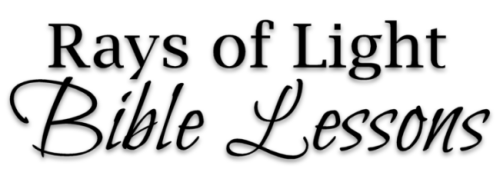JESUS IS LED TO CALVARY
Luke 23:26-32 And as they led Him away, they laid hold upon one Simon, a Cyrenian, coming out of the country, and on him they laid the cross, that he might bear it after Jesus. And there followed Him a great company of people, and of women, which also bewailed and lamented Him. But Jesus turning unto them said, Daughters of Jerusalem, weep not for Me, but weep for yourselves, and for your children. For, behold, the days are coming, in the which they shall say, Blessed are the barren, and the wombs that never bare, and the paps which never gave suck. Then shall they begin to say to the mountains, Fall on us; and to the hills, Cover us. For if they do these things in a green tree, what shall be done in the dry? And there were also two other, malefactors, led with Him to be put to death. (Also See Matt. 27:31-34; Mark 15:20-23; John 19:16-17)
Although the recordings of other gospel writers will be considered, Luke's account is much more detailed and will be the lesson text for this study. After the vain attempts of Pilate to find Jewish consent to release Jesus, after giving in to the cries of Jesus' accusers to crucify Him, and after the derisive mocking of Jesus by the Roman soldiers, they led Him away to crucify Him. Since the penalty of death had to be carried out by Roman soldiers, they were the ones that led Jesus away to the site of His crucifixion. Although Luke calls the place of crucifixion as Calvary, which is the Latin translation for the same place referred to in Hebrew as Golgotha, or a place of a skull. The place is thought to be a knoll shaped like the crest of a skull, which, according to John 19:20 was located, not within the gates of Jerusalem, but nigh to the city.
Although omitted in John's account, the other gospel writers tell us that a man from the country of Cyrene named Simon was compelled to bear His cross. Mark adds that this man was the father of Alexander and Rufus, of whom we know nothing further. In John's account we also learn that the cross was, at first, laid on Jesus, Who bore it for a portion of the way to Calvary. It is said by those studying such incidents that, as part of their punishment, those being crucified were required to bear their own cross, on which they were to be slain, to the site where the death penalty was to be carried out. By these narratives it is obvious that Jesus, due to His initial scourging and abusive mocking, was exhausted and too weak to bear the burden of His crucifixion cross. Therefore Simon was compelled to bear the cross for Jesus.
Only Luke records the following account. He wrote that a great company of people, mostly, if not all, were women who had followed Jesus as He made His way toward Golgotha. Although we are not told who these followers of Jesus were, but they probably included many that were His previous followers and possibly others that, may not have met Jesus face to face, but knew of His teaching and the compassionate miracles that He performed. They certainly were not the enemies that sought His death, but His devoted followers. Moved with compassion over His pending fate, this great company openly grieved because of His approaching death. As only Jesus could do at a time like this, His concern was only for their wellbeing. He told them, weep not for Me, but weep for yourselves, and for your children. Jesus, completely aware of the destruction of Jerusalem that would soon take place, warned these women that their lamenting cries should be for their own safety and wellbeing, especially for those that were with child. To those that failed to flee the destructive invasion of the Roman armies, Jesus warns them that they will pray for death to take them, rather than the enemies - that the mountains (to) fall on us; and to the hills, (to) cover us. Jesus then quotes the meaning of a proverb, found in Ezekiel 20:47, depicting the unmerciful Roman oppressors: For if they do these things in a green tree, what shall be done in the dry? If these rulers crucify the Messiah, who was promised to the Jewish nation, what hope is there for the nation itself? At this point Luke also adds that there were also two other, malefactors, led with Him to be put to death.
Returning to Matthew's account, we learn that after they were come unto a place called Golgotha, that is to say, a place of a skull, they gave Him vinegar to drink mingled with gall, (Wine mingled with myrrh, meaning the same thing, Mark 15:23). It was given to stupefy and dull the senses; to deaden the pain of His crucifixion. (W)hen He (Christ Jesus) had tasted thereof, He would not drink, preferring to endure the pain.

